One in three women over the age of 18 experience bladder leaks every day, and yet, many of us feel alone when facing incontinence.
Urinary incontinence is still such a taboo that 57% of women suffering it never tell anyone according to our recent survey of 2,000 women.
We want to open up the conversation and encourage women to talk about it, so no woman has to feel embarrassed and alone by an issue that can, and should, be treated.
Whether you suffer from an overactive bladder, stress incontinence, or overflow incontinence, urine leakage shouldn’t become the new normal. You should be able to run, jump, cough, or sneeze without drops.
Besides visiting a health professional, there are easy things you can incorporate into your daily routine — such as pelvic floor exercises and a few dietary changes — that will help to prevent leaks.
Exercises for leaky bladder
A leaky bladder can make even popping to the shops a difficult or anxiety-ridden task. But, fear not, urinary incontinence isn’t something you have to put up with forever. Incorporating pelvic floor therapy exercises into your weekly routine can help strengthen your pelvic floor muscles and prevent leaks.
Kegel exercises
Kegel exercises focus on strengthening the pelvic floor muscles to better support your bladder, bowel, and even improve sexual function. They can easily be done at home to minimize urinary incontinence.
How to do Kegel exercises:
Empty your bladder before sitting or lying down.
Tighten your pelvic floor muscles (imagine you are trying to hold in urine) but keep your thighs, buttock muscles, and abdomen relaxed.
Tighten those muscles as tight as possible and hold the position for 3 to 5 seconds, take a short rest before repeating 10 times.
Over time as your muscles get stronger, you can hold them for more extended periods.
Repeat this routine 3 times a day (morning, afternoon, and evening) for the best results. After a few weeks, there should be some improvement in your urinary incontinence as you get a better hold of your muscles.
Using a tool such as the Elvie Trainer can help you perform Kegel exercises correctly by enabling you to visualize the hidden pelvic muscles that support core stability and bladder control.
Bridges
The bridge exercise primarily targets your glutes, but it’s also a great exercise for bladder leakage and tightening your pelvic floor muscles. Who wouldn’t want buns of steel and better bladder control?
How to do bridge exercises:
Lay down on the floor on a yoga mat or a soft, comfortable spot with your knees bent, feet flat on the floor, and arms down by your sides.
Pull your buttocks and pelvic muscles tight and lift your buttocks several inches off the ground.
Hold this position in the air for 5 to 10 seconds.
Relax your muscles and slowly lower your buttocks back to the ground.
Repeat this process up to 10 times and rest in between each rep.
Take a break between each set and try to perform three sets of reps daily.
Squats
Squats are another great movement for strengthening pelvic floor muscles and preventing urine leakage. These can be done at home or in the gym; however, if you haven’t squatted before, it’s best to do the exercise without weights.
How to do squats:
Stand with your feet flat on the floor, hip-width apart.
Slowly bend your knees while positioning your buttocks towards the floor. Be sure to keep your back straight and slightly lean forward. Keep your knees in line with your toes.
Slowly return to a standing position while keeping your buttocks and pelvic floor tight.
Take a few seconds to rest in-between each rep and repeat this exercise 10 times.
By repeating these pelvic floor muscle exercises daily, you’ll target the right muscles and increase the strength of your pelvic floor. Instead of looking for ways to prevent incontinence while exercising, exercise can actually be an advantage when it comes to treating incontinence.
How long do leaky bladder exercises take to work?
The key to the effectiveness of leaky bladder exercises is consistency! Kegels and other pelvic floor exercises are designed to gradually increase your muscle strength — it won’t happen overnight, but you’ll notice an improvement over time if you keep up your exercise routine daily.
It may be a few months before you feel noticeable results; however, depending on the severity of your symptoms, you may notice changes sooner. The great thing is, these exercises only take up around 10 to 15 minutes of your day, so incorporating them into your routine shouldn’t be too much of a challenge.
10 easy daily habits to control urinary incontinence
Sleep 7 to 8 hours a night. This is the optimal amount for most people. A good night’s sleep boosts your immunity, regenerates neural pathways in your brain, and repairs muscles and connective tissue, which is key for pelvic floor balance and protection.
Go for a walk. Include a 20 minute walk in your daily routine. Walking helps stimulate the parasympathetic nervous system, which works to relax and slow down our bodies. Walking up a slight incline also helps to engage the glutes.
Do daily breathing exercises. Improve your diaphragmatic breathing with a 10 minute breathing exercise routine. Inhale through the nose for between 4 to 6 seconds — feel how your tummy and lungs expand as you breathe in, and how your lungs empty as you exhale from the chest down.
Stay hydrated. Drink 6 to 8 glasses of water per day. This is recommended for an average adult, although it may vary from person to person. You may think that when suffering from urinary incontinence you should be cutting down on liquids; however, drinking enough water is essential for bladder health.
Lower your caffeine intake. Cut down on coffee, black tea and energy drinks, and try non-caffeinated herbal teas or lower caffeine alternatives such as matcha lattes. Caffeine is a bladder stimulant and it increases the kidney’s production of urine, which may irritate your bladder and make incontinence worse.
Quit smoking. Smokers have a higher risk of bladder control problems. Constant coughing puts strain on your pelvic floor muscles, weakening them over time. This means that they may not be able to support your bladder, resulting in urinary leakage.
Cut down on alcohol. Alcohol is a diuretic, which means that it increases the production of urine, which can lead to an overactive bladder. Alcohol also interferes with the signals to and from the brain and the bladder, meaning it can be difficult to know when you need to go to the bathroom.
Increase the fiber in your diet. Eat high-fiber foods such as lentils, green leafy vegetables and beans. This can help ensure a healthy bowel movement and avoid constipation. Straining to empty your bowels puts pressure on your pelvic floor and may damage it.
Avoid spicy and acidic foods. Tomatoes, tomato-based products, curries, chili and citrus fruits (including lemons, limes, oranges and grapefruit) may irritate the lining of your bladder and worsen urinary incontinence.
Exercise your pelvic floor daily. Regular kegel exercises can improve pelvic floor dysfunctions, including urinary incontinence. Squeeze and lift your pelvic floor as you exhale, hold this contraction for five seconds, and then relax for five seconds. Repeat this sequence five times, three times per day.
If you’re recovering from childbirth, you may want to integrate pelvic floor strength training into movements that you do on a daily basis.
You can also give your pelvic floor a complete workout by using a pelvic floor trainer. Devices incorporating biofeedback technology can help you exercise your muscles correctly. Elvie Trainer can detect if you’re pushing down rather than lifting up the muscles and alerts you via the app, helping you to get it right.
For more information about how Elvie Trainer works and how to use it, check out our support page.


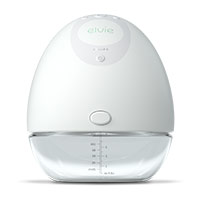

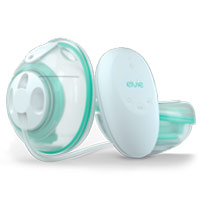
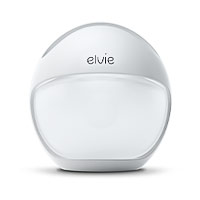
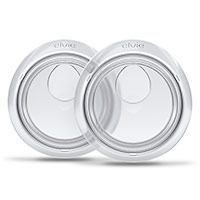
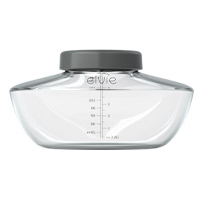
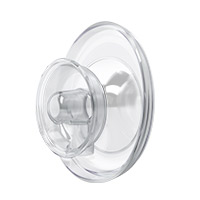

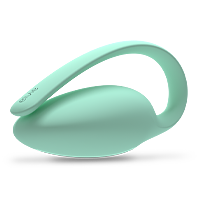
 7 minute read
7 minute read